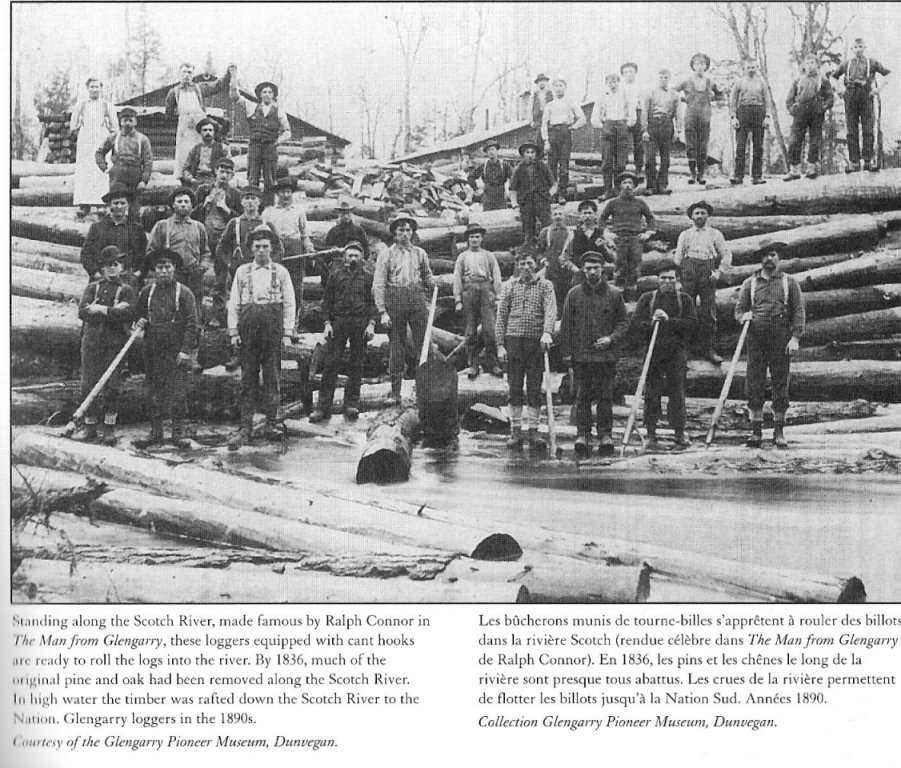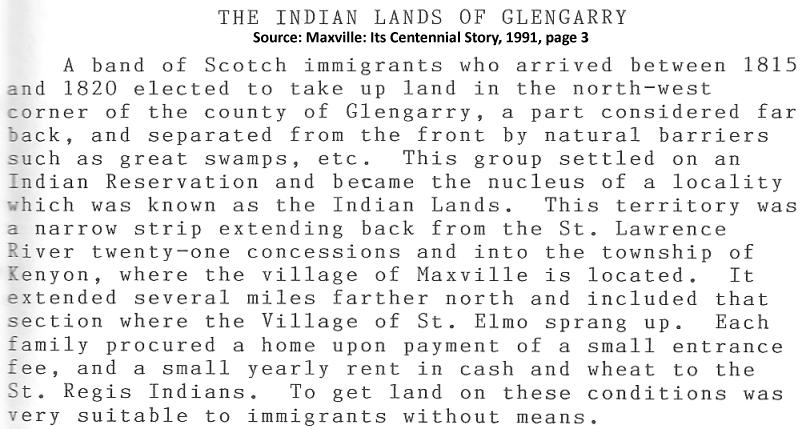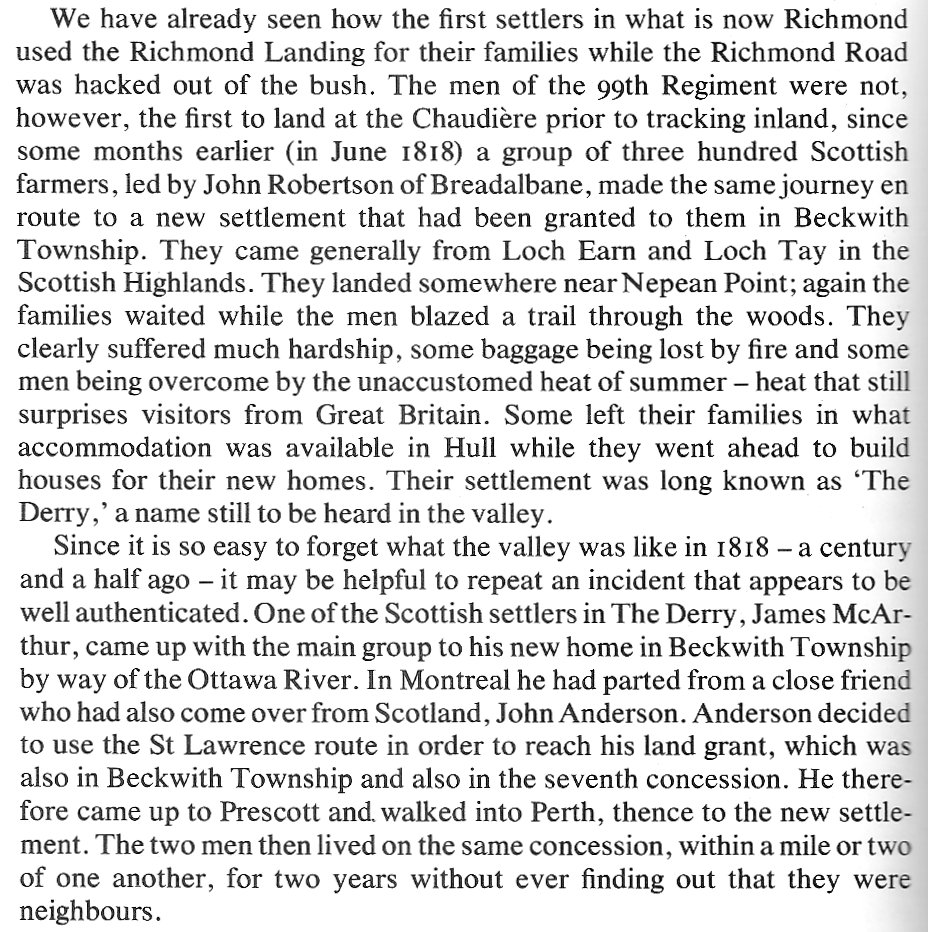Some History of Glengarry County, Upper Canada, Where the Jesmers settled as farmers, in the early 1800’s.
Some History of Glengarry County Upper Canada, where the Jesmers settled as farmers, in the early 1800’s.
Compiled from the internet by Kevin E. Jesmer 2015.


Glengarry later united with Stormont and Dundas to form the regional government United Counties of Stormont, Dundas and Glengarry.
http://en.wikipedia.org/wiki/Glengarry_County,_Ontario
During the 19th century the original Scots settlers were joined by French-speaking farming families from nearby Quebec who moved west to find land less densely populated.
http://www.rootsweb.ancestry.com/~onglenga/
“Farming was the main occupation of Glengarry families and although the county is well watered by the Raisin, the Baudette and the Delisle Rivers, as well as several branches of the Rigaud River, the land did not produce too many rich farms and it became customary for the young men to winter in the lumber shanties to supplement their income. The men also left for parts of the United States and the western provinces seeking a more lucrative way of life.”
http://www.rootsweb.ancestry.com/~onglenga/
Before the Scottish Immigrants came to Glengarry County and Lanark County, these “Townships” were populated by Aboriginal peoples in the Ottawa area.Some of the Algonquin people were located in the Ottawa River Watershed including Lanark County. The Mohawk people were living along both sidesof the St. Lawrence River, including in the Maxville area. These Indian lands were encroached upon by European settlers for very little in compensation. The Maxville area was part of the early St. Regis Reserve. Source below: Maxville: Its Centennial Story, 1991, page 3, (no ISBN)
The South Nation River was one of the tributaries of the Ottawa River inhabited by the Algonquin Nation before the Europeans came to this area.This group was contiguous with the Natives from La Petite Nation / the Lievre River, across the Ottawa River in Quebec. This sub-group of the Algonquins is called the Weskarini.
http://www.bytown.net/scots.htm
Glengarry County , an area covering 288,688 acres (1,168 km2), is a county in the Canadian province of Ontario, and is historically known for its settlement of Highland Scots due to the Highland Clearances. Glengarry County now consists of the modern-day townships of North Glengarry and South Glengarry and it borders the Saint Lawrence River.
Glengarry was founded in 1784 by Scottish loyalists, mainly from Clan MacDonnell, and other Highland Scottish emigrants from Mohawk Valley. Besides being founded as a settlement for Scottish United Empire Loyalists the settlement was also setup as a destination for Scottish emigrants due to the recent Highland Clearances. Throughout the late 18th and the 19th century, other Highland emigrants settled into the community mostly to preserve their Scottish Highland Culture. The county was named after the Scottish Glen where the MacDonnell family was based. The Glengarry Highland Games are an example of the county’s historic culture, first being celebrated in 1948, and has been held annually since in the first week of August. These Games are one of the largest of their kind outside of Scotland. The original territory of Glengarry also included Prescott County, which became a separate county in 1800.
Canadian Gaelic (i.e. Scottish Gaelic) used to be a common language in this region. Though the number of speakers has steadily decreased over the past years, those wanting to learn Gaelic form classes throughout Glengarry.
Glengarry later united with Stormont and Dundas to form the regional government United Counties of Stormont, Dundas and Glengarry.
http://en.wikipedia.org/wiki/Glengarry_County,_Ontario
Glengarry County (Scottish Gaelic: Siorrachd Gleanna Garadh), an area covering 288,688 acres (1,168 km2), is the most eastern county in the Canadian province of Ontario.
Glengarry was first settled in 1784 by Highland Scottish emigrants, mainly from the Clan MacDonnell, coming north from the Mohawk Valley in New York State. The settlement also became a destination for Scottish emigrants displaced in Scotland due to the recent Highland Clearances. Throughout the late 18th and the 19th century, other Highland emigrants arrived knowing it to be a place where they could preserve their Highland Scottish Culture.
The county was established in 1792 as part of the Eastern District of Upper Canada. The original territory of Glengarry also included Prescott County to the north and west, which became a separate county in 1800.
The county was named after the Scottish Glen where the MacDonnell family was based. The Glengarry Highland Games are an example of the county’s culture. They were first celebrated in 1948, and have been held annually since in the first week of August. These Games are one of the largest of their kind outside of Scotland.
Canadian Gaelic (i.e. Scottish Gaelic with practical local additions) used to be a common language in this region. Though the number of speakers has steadily decreased over the past years, those wanting to learn Gaelic are able to do so in classes held throughout the county.
During the 19th century the original Scots settlers were joined by French-speaking farming families from nearby Quebec who moved west to find land less densely populated.
In 1849 Glengarry united with the counties of Stormont and Dundas to the west to form a regional United Counties of Stormont, Dundas and Glengarry. The union between them was never a complete one. For this reason and for geographical simplicity, each of the three counties is discussed separately in We Relate.
Glengarry was originally divided east and west into Charlottenburg and Lancaster Townships. Very early in their history Charlottenburg and Lancaster were divided north and south into two townships each, with the northern townships being named Kenyon and Lochiel, respectively. In 1998 the townships were reorganized into the municipalities of North Glengarry and South Glengarry.
http://www.werelate.org/wiki/Place:Glengarry%2C_Ontario%2C_Canada
Glengarry County was established in 1792. The first settlers, United Empire Loyalists’ Herkimer’s Batteau Company, Kings Royal Rangers (New York) and the 84th Regiment of Foot, arrived in 1783.
In 1786 500 settlers arrived from Glengarry, Scotland and were the first to settle inland, away from a river.
By the early 1800’s the population of Glengarry was primarily Scottish but began to change when French Canadian settlers arrived. They had left neighbouring communities in Quebec due to land shortages.
“Farming was the main occupation of Glengarry families and although the county is well watered by the Raisin, the Baudette and the Delisle Rivers, as well as several branches of the Rigaud River, the land did not produce too many rich farms and it became customary for the young men to winter in the lumber shanties to supplement their income. The men also left for parts of the United States and the western provinces seeking a more lucrative way of life.”
http://www.rootsweb.ancestry.com/~onglenga/
April 29, 2008:We usually associate the logging and timber trade with the PreCambrian Shield areas to the north and west of the city of Ottawa. However, beginning in the early 1800’s,Glengarry Scots and French Canadians operated a profitable logging industry as the following photo shows. The Scotch River is a tributary of the Nation River which flows into the Ottawa River at Plantagenet. The Scotch River was written about in 1901 by Ralph Connor in his book The Man from Glengarry.
http://www.bytown.net/scots.htm
Archibald McLean of Murlaggan, Scotland, led a group of Highlanders to settle in Glengarry Township in 1802.It was difficult to have these folks all settle together in Glengarry Township because most of the land was already granted.
http://www.bytown.net/scots.htm








Interact with us using Facebook